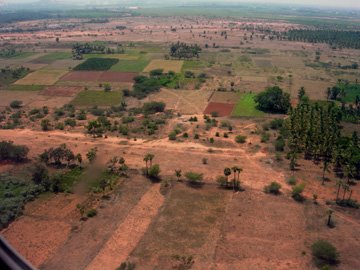I interrupt the thrilling story of our visit to Thekkady, because someone commented about the Iyers of Palakkad and their language, which is a blend of Tamil and Malayalam. It reminded me of a cook who worked for us for a short time...
We had a cook named Shanti, who was with
my husband for abut 35 years, until she died. I was a relative latecomer. Shanti assumed, usually correctly, that I didn't know much, so she felt secure in her position as the ruler of the kitchen. She had actually begun as a housemaid, sweeping and swabbing. In those days R, unhappy with her work, told her that her name, which was G. Shanti, should actually be D. Shanti:
Doosi ('dust') Shanti. But somehow she stuck on, and eventually became a cook. Only, every few years there would be a fight - we would insist that she arrive on time - or, once, she believed that our house had been cursed by a black magician - and she would quit. We would bid her good-bye, half-relieved to be rid of her, with her stubborn individuality, and hire a series of people, none of whom seemed to fit into our household. Then, after six months or a year, she would turn up at the door again, and we would groan and sigh, and take her back. Eventually she grew old, and we hired an assistant for her. Finally she had a heart attack in the kitchen, and died in the hospital a few days later. Her assistant, Mary, is now the ruler of the kitchen. And a more pleasant one too, though I still miss Shanti, with her sense of humour and her good cooking and her maddening ways.
So anyway, during one of the interregnums, we hired a woman named Parvathi, a brahmin from Palakkad. We took her on out of desperation, because my mother-in-law was still alive then, but elderly, and she expected all the household routines to go on as usual, with or without a cook:
ghee had to be made once a week from the butterfat skimmed off the top of the milk (yes, in those days Aavin milk actually yielded
ghee, believe it or not!). The menu was more elaborate than it is now, with just the two of us. There were sweets, and savouries, and things had to be done in a certain way, yet she was unable to do much herself, because of her severe arthritis. So I was trying to be a proper housewife, which I never was and never will be… we hired Parvathi.
At our first meeting she talked so fast, laying down so many conditions - as a brahmin she would prepare the food but not wash the dirty dishes, for example - that R was taken aback. He told her that she spoke so loudly and rapidly that his heart was going
dha-rup dha-rup with fear, and that if one put a coconut in her mouth, by the time she finished talking the chutney would be ground and ready.
Parvathi told me that her father had been a temple priest at Guruvaiyur Temple in Kerala. He had married Parvathi's mother when he was 45 and she was 13, and they had had eight children. When the youngest child was one year old, her father was doing
puja in the temple — he had drunk the sacred water, and bent to put flowers at the god's feet -- and he fell over and died. Auspicious for him, but hard on the family.
Parvathi spoke in the mixture of Tamil and Malayalam for which Palakkad is famous, making it difficult for me to communicate with her. She would work for us only part-time, because she had a job in another house as well. It was hard for brahmins to get well-paying work, she said. If she were lower-caste she could string jasmine and sell it, but it wouldn't be suitable for her ... The housemaid resented having to add kitchen chores to her workload, and Parvathi didn't really want to learn Gujarati cooking. After a couple of weeks we parted very cordially.
A few days later I opened the door and there was Shanti, waiting to be invited in.















